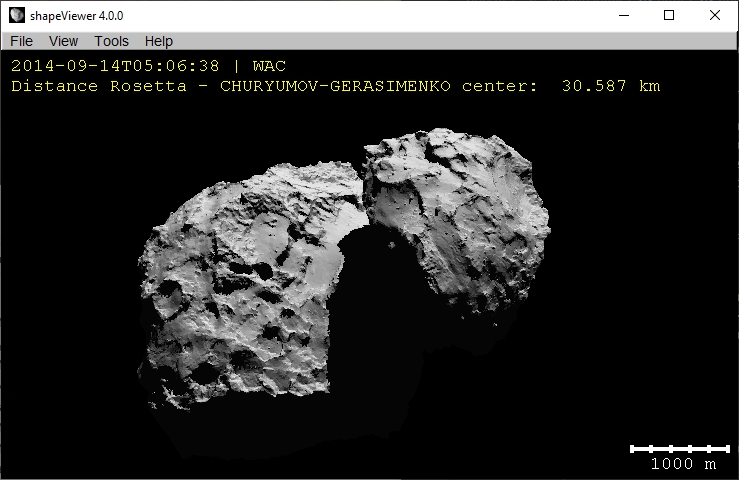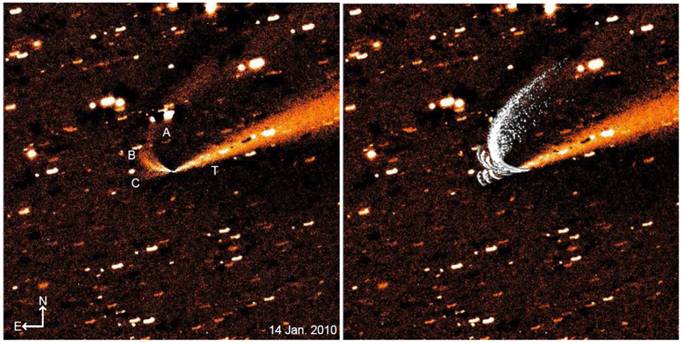In my research, I often need specific tools which are not readily available:
from numerical models of cometary physics to mission simulators.
As much as I can, I like to share those programs freely with the community,
in the hope they may be useful for others.
This page provides a short summary of my software, all tools can be found at
comet-toolbox.com.
shapeViewer
shapeViewer
is a publicly available scientific software designed to display a
3D model of a comet/asteroid, simulate observations from a space mission,
project data on the shape. It provides a series of tools specifically developed
for mapping and geomorphological investigation.
shapeViewer has been used for operations planning and scientific analysis by the camera teams of Rosetta (ESA) and Dawn (NASA) missions. It currently supports DART (NASA) + Hera (ESA), and Comet Interceptor (ESA).
shapeViewer has been used for operations planning and scientific analysis by the camera teams of Rosetta (ESA) and Dawn (NASA) missions. It currently supports DART (NASA) + Hera (ESA), and Comet Interceptor (ESA).

shapeViewer
Finson-Probstein modeling
M. L. Finson & R. F. Probstein (1968) proposed a theoretical model
to describe the trajectory of dust grains in cometary tails.
This model has become a standard approach to derive information on the physical
properties of the ejected material, and precisely date sporadic events such
as outbursts, impacts, or nucleus fragmentation.
I have developed a javascript version of this model, which allows for quick simulations in your browser.
I have developed a javascript version of this model, which allows for quick simulations in your browser.

Examples of Finson-Probstein diagrams
COSSIM: COma Structures SIMulator
Beyond dust tails, I developped a model which simulates localized dust emission
from cometary nuclei and reproduces ground or space based observations.
The model has been applied to constrain the spin axis orientation and activity of several targets : 73P-B/C, 9P, 81P, & 67P. All results have been confirmed by in-situ measurements from Deep Impact, Stardust, Rosetta. I have analysed and simulated the activity of 67P over the last two perihelion passages, and predicted succesfully what the Rosetta mission would observe in 2014-2015.
A limited version of COSSIM is open-source and implemented in the Finson-Probstein tool. I am rewriting the full simulator in Python for Comet Interceptor and hope to release it publicly before the mission launches in 2028.
The model has been applied to constrain the spin axis orientation and activity of several targets : 73P-B/C, 9P, 81P, & 67P. All results have been confirmed by in-situ measurements from Deep Impact, Stardust, Rosetta. I have analysed and simulated the activity of 67P over the last two perihelion passages, and predicted succesfully what the Rosetta mission would observe in 2014-2015.
A limited version of COSSIM is open-source and implemented in the Finson-Probstein tool. I am rewriting the full simulator in Python for Comet Interceptor and hope to release it publicly before the mission launches in 2028.

Large scale jets seen in enhanced ground based observations
(left: 81P/Wild 2 image; right: COSSIM model)